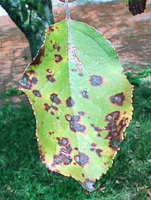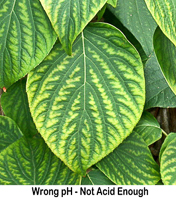 Before you decide
what to do with a problem in your landscape, you
have to determine whether you really have a PROBLEM.
Just because you find a few bugs crawling around
your plants does not automatically mean that they
are creating a problem. They may be totally harmless
to your plants or may actually be beneficial. So,
the first step is to identify what is going on in
your landscape. This is the diagnosis phase.
Before you decide
what to do with a problem in your landscape, you
have to determine whether you really have a PROBLEM.
Just because you find a few bugs crawling around
your plants does not automatically mean that they
are creating a problem. They may be totally harmless
to your plants or may actually be beneficial. So,
the first step is to identify what is going on in
your landscape. This is the diagnosis phase.
You should NEVER base any action in your landscape
on a guess. The proper identification or diagnosis
of a situation is vital to the entire process. Large
volumes of chemical pesticides are needlessly
released into the environment by home gardeners each
year because they use the wrong product for the
wrong pest at the wrong time.
If you suspect a problem with your plants, delay any
actions until you have properly identified a)
whether it is truly a problem at all and b) if it is
a problem, its identity.
 For example, what if you have some spots on the
leaves on a tree or shrub in your landscape? What is
the cause? Well, it could be one or several of many
things. Certain types of insect feeding on the leaf
surface will leave spots. Fungal diseases such as
apple scab will result in spots. It may be because
of a nutrient deficiency. Perhaps they are the
residue of minerals in the irrigation water. A late
spring frost could have caused the spots. As you can
see, it will take a little detective work to figure
out what is happening with the leaves.
For example, what if you have some spots on the
leaves on a tree or shrub in your landscape? What is
the cause? Well, it could be one or several of many
things. Certain types of insect feeding on the leaf
surface will leave spots. Fungal diseases such as
apple scab will result in spots. It may be because
of a nutrient deficiency. Perhaps they are the
residue of minerals in the irrigation water. A late
spring frost could have caused the spots. As you can
see, it will take a little detective work to figure
out what is happening with the leaves.
To help, you can usually take samples to the local
Extension
Service Office or to a plant nursery that you
trust. There are may online or book resources
available to help with diagnosis.
Once you feel satisfied that you have properly
identified a problem, you can begin to
Determine
a Damage Threshold.



